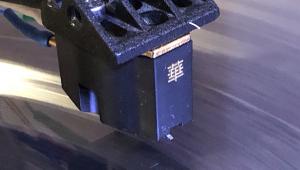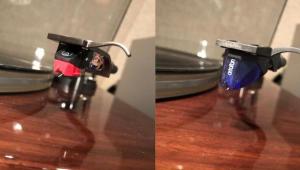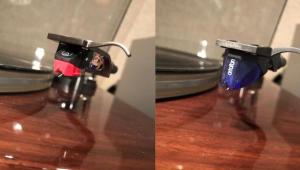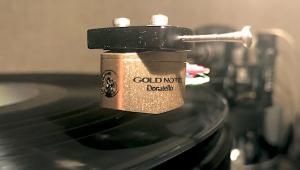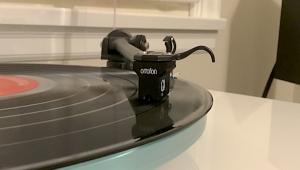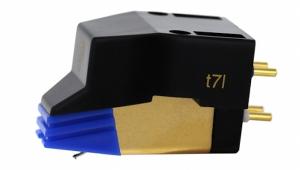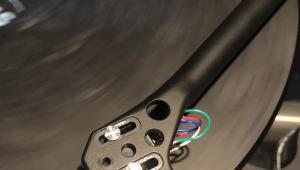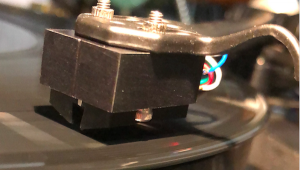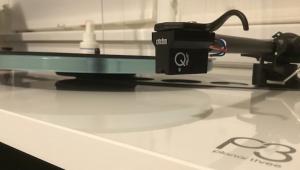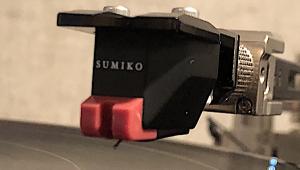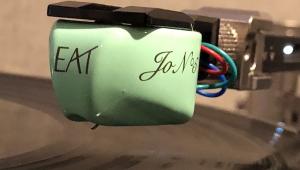Soundsmith’s new Zephyr MIMC Star Cartridge: Luxury You Can Afford

B&O had abandoned its customers when it exited the turntable business, leaving turntable owners with no way to spin vinyl.
Ledermann approached B&O and when the company wasn’t interested in supplying him with the technical plans he asked if he could back-engineer it. Their response was “good luck to that” (or words to that effect).
Ledermann managed to do just that, and soon established a successful worldwide business supplying B&O customers with replacement “plug in” “moving iron” cartridges.
When that market was saturated, Ledermann began building standard mount versions and thus was born another business just as the vinyl resurgence began..
Over the years he’s refined and modified the basic design, which he prefers to call “fixed coil” rather than “moving iron”. There are more models and versions priced from moderate to expensive producing various outputs, than I think is healthy but that’s just my opinion.
The new $1749.95 Zephyr MIMC Star is Soundsmith’s entry point into its high end, low output lineup. Before you consider that not “affordable” consider that if you mess up and snap the cantilever during installation, Soundsmith will rebuild it at this time for $350. Even after you’ve worn out the stylus, the cartridge can be rebuilt for the same amount “at this time”. Most MC cartridge “re-tips” cost approximately half of list price, so do the math: you get “two” Zephyr Stars for around $2100.
Right now Soundsmith is offering another buying incentive: buyers of the first 1500 Zephyr Star cartridges will receive a small golden envelope corresponding to a free gift from Soundsmith ranging from a set of EZ Mount Screws (1420) to an SG-210 Strain Gauge cartridge (4). In between are Hyperion cartridges (6), Sussurros (10) and four other cartridge models (15 each). So you are guaranteed to get something if you buy one of the first 1500 Zephyr Stars.
The Zephyr Star, which weighs 10.27 grams, features a Sapphire cantilever (says “Boron” on the company’s website) laser drilled to accept the Selected Contact Line low mass nude stylus, and borrows much of its internal technology from the $4800 Sussurro cartridge that I reviewed some time ago in Stereophile. The Zephyr Star’s compliance is suitably low at 10µm/mN, its rated channel separation at 1K is rated at greater than 28dB and 25dB between 50Hz and 15kHz.
The name is an acronym for “Moving Iron for Moving Coil preamps). In other words, with its .4mV output, the MIMC should be used with a moving coil phono preamp capable of producing between 58-64dBs of gain.
Recommended tracking force is between 1.8-1.9 grams. So far this sounds like standard MC fare but because of the design, it is particularly sensitive to loading and its loading requirements are different from those of a typical MC cartridge. Soundsmith recommends loading to 470 ohms or more to avoid high frequency roll-off. A Soundsmith spokesperson recommends closer to 1000 ohms, but this is a personal choice. However, once you get below 470ohms you’ll easily hear the top end roll off. You can try 47kOhms too but you’ll probably hear an undamped resonant peak.
So here’s where you have to carefully consider your phono preamp’s capabilities. In MC mode, some don’t extend loading much beyond a few hundred ohms, and if yours has a step-up transformer based input, you’d best determine the effective load before considering a Zephyr since while you can often load down the input, you can’t load up.
The “Fixed Coil” (or “Moving Iron”) Advantage?
Rather than going through Soundsmith’s advocacy here, why not go here and read for yourself the company’s claims for the technology keeping in mind that there are always two sides to every story!
Two claims I will corroborate are those for quiet hum-free operation and especially the one for high dB channel separation. I measured 35.5dB of separation in both directions (L-R and R-L) with the head shell parallel to the record surface, no azimuth adjustment necessary. Now you could say this one was “hand picked” for the review, but that’s also possible for other cartridges I’ve been sent for review, and other than a $9995 Lyra Etna SL that measured 36dB (and not the one I was sent, but rather one I recently set up for a friend), I’ve not measured another cartridge that produced such crosstalk results.
The oscilloscope trace on top in yellow shows the 1kHz test tone modulating the left channel of the test record. Theoretically the blue trace should be flat, which would mean no crosstalk but of course there’s always some. In this case the blue line is about as flat as I’ve seen. Usually there’s more of a visible wave, indicating higher crosstalk.
Zephyr Star Sonics
As the measurements predicted, the Zephyr Star produced as wide a soundstage as I’ve experienced in my room: wide, deep, stable and three-dimensional. Images on the stage were three-dimensional and satisfyingly solid. More impressive was the presentation’s liquidity and complete freedom from mechanical artifacts.
The Zephyr Star smoothly handled the toughest vocal sibilants and overall produced liquidity not compromised by a soft finish.
One of the first records I played was Analog Sparks’ spectacular reissue of A Fiddler on the Roof (79301836821-6/RCA LSO-1093) finally not hobbled by Dynagroove processing. This 1964 Webster Hall recording features a wide, some might say overly L/R staging but the presentation through the Zephyr Star was ultra-stable and well reproduced the reverberant field that holds together the mix despite the occasional separation extremes.
The front to back three-dimensionality projected Zero Mostel well into the room well forward of a line between the speakers, and the effect was to bring the great actor back to life in the ways only the very best cartridges manage.
However vinyl’s dynamic range gets measured, the reality is far wider dynamics than measured as this record proves. You won’t be disappointed by this cartridge’s spatial presentation, I don’t care what cartridge you use or how much you’ve spent.
Its dynamic presentation is also bold and unrestrained, unless you are used to far more costly cartridges where you can get greater microdynamic subtlety (small dynamic shifts) and better “image carving” and solidity with blacker background black (you do get what you pay for when you spend $5000, $8000 and more for a phono cartridge) but with the Zephyr Star, I think you will get more for your $1749.95 than you were expecting to get.
Installed in a Kuzma 4 Point, the Zephyr Star proved to be a super tracker and with its low mass Contact Line stylus an equally good tracer, able to get into the smallest groove “nooks and crannies”. I played ORG’s double 45 reissue of Ella Fitzgerald Sings the Rodgers and Hart Song Book (Verve MG VS-64022/ORG 055) and found the liquidity, and freedom from mechanical and/or sibilant artifacts made for very smooth and enjoyable listening but with transient details mostly intact. The Zephyr Star is a “smoothie” without being a “softy”.
In term of frequency response, I found the Zephyr to be without “lumps” and obvious “bumps”. With the phono preamp correctly configured, the subjective response is neutral with perhaps a bit of an midband overemphasis that produces a billowy, airy fullness that well complements many speakers. The Zephyr’s bottom end is robust and well-controlled, while the top end is airy, extended and seemingly limitless—all without producing edge, spotlighting on top or bloat on bottom. An impressive tonal performance!
Conclusion
At the under $2000 price point, the new low output Soundsmith Zephyr MIMIC Star is an overachiever that gives you a glimpse of the best in terms of non-mechanical, artifact-free performance, for a small percentage of the state of the art asking price. With measured 36dB chancel separation the Zephyr Star’s spatial performance is up there with the best at any price, as is its smooth, reasonably fast and non-mechanical overall demeanor.
If you crave more tightly drawn, solid and compacted images, sharper, faster, better focused transients and blacker backgrounds they can be found, but at a far higher price-point. Soundsmith’s new Zephyr Star is a star.




